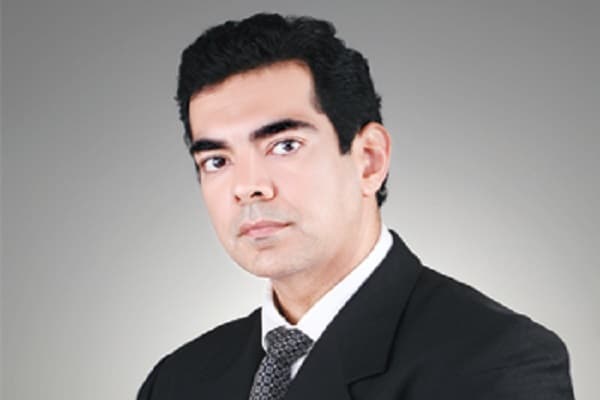Although an emerging concept in India now, hyper-convergence is attracting chunks of IT service providers, IT developers, analysts and data centre operators in galore – thanks to its ability to enhance business agility and reduce data centre operation costs. While it is simple, easy to manage and far more cost effective compared to the traditional data centre architectures, India needs to know who should invest in this technology and why. Sreemoyee Chatterjee from OSFY had a recent interaction with Rajesh Ramnani, regional director at Converged Platforms and Solutions Division (CPSD), Dell EMC, India that is revolutionising IT infrastructure management using hype-convergence.

Q What is hyper-convergence? Why is it a necessity in India now?
Hyper-converged infrastructure is a software defined format of consuming IT infrastructure. Most IT departments in enterprises are struggling to keep up with the needs of today’s business for speed and efficiency. This include ways of figuring out how to make apps run faster, make provisioning simpler, offer non-disruptive and quick scaling – all economically. Traditional infrastructure and prevailing processes can no longer rise up to the requirements and new demands of the next-generation data centre. This is where hyper-converged infrastructure (HCI) is able to solve this problem.
Q Who are the essential customers of hyper-convergence in the country?
There is no limit to the use cases and customer profiles who can utilise the benefits of hyper-convergence. We are currently seeing multiple user groups utilising HCI in their ecosystem. These include data centre operations in-charge, software developers and analysts, IT service providers, enterprises with limited IT skills and remote offices.
Q Why should these customers invest in this technology?
Customers across all industries can benefit from the adoption of converged systems. Organisations – large and small, from all industries, who are striving to modernise their infrastructure in order to compete in today’s digital age will benefit from an integrated system and converged infrastructure environment.
A hyper-converged infrastructure help customers in building, maintaining and expanding their own IT infrastructure, which is risky, saps time and resources and makes predictable scaling difficult. Managing the life cycle becomes easier, which is otherwise complicated with multiple upgrades. Dealing with multiple support organisations is too hard and takes too long.
Hyper-converged infrastructure is being marginally preferred for perimeter workloads, which are non-core for the business. It is also being used extensively where organisations have high scale-out requirements. With scalability and simplicity as the key parameters for customers in India, HCI appliances are a perfect fit for businesses looking to move from a ‘build yourself’ to a ‘buy’ model.
Q What role hyper-convergence has for IoT and Open Source?
India is going through a digital revolution and government is promoting organisations who want to test and deploy solutions on Open Source. In fact, many government entities are adopting Open Source to a very large extent. Hyper-convergence allows seamless deployment and testing of Open Source applications on our platform.
Many IoT systems are today being developed on Open Source that use hyper-convergence for their ease of deployment and testing. A considerable number of organisations in IT and IT enabled services are using benefits of HCI for the said purpose.
Q Where does India stand in terms of adopting hyper-convergence technology?
India is one of the forerunners in adopting new technologies like hyper-convergence. India has already seen the benefits of hyper-convergence for its customers and has begun adopting it in large scale. The market is growing at an unprecedented rate of more than 70 to 80 percent every year.
Unlike any other geographies, there is less amount of legacy system in India. There are customers who are keen to adopt a technology, which is new and will last for the next seven to 10 years and hyper-convergence tops that list.
While just four years back, we were struggling to explain the benefits of hyper-convergence to customers, starting this year, we have noticed that they have fairly educated themselves on hyper-convergence and are approaching us and asking for solutions around hyper-convergence.
Q What has Dell EMC to offer in hyper-convergence?
Dell EMC’s hyper-convergence solution has two key offerings. One is our appliance based offering, known as VxRail and the other is rack based offering called VxRack. Now, both of these categories come in two flavours – VMware based flavour wherein the end to end solution is based on the VMware software stack and the mixed hypervisor option wherein the customers have the flexibility to choose the kind of hypervisor that they would want to deploy.
The reason for having two different flavours is predominantly because a big chunk of the market is tilted towards VMware hypervisor, hence; we have an offering dedicated for VMware. Also, there are a set of customers who would want to have flexibility. Thereby, we provide the second flavour as well.
Q Why do you have two options of offerings – application based and rack based?
When a customer wants to start small and is looking at deploying hyper-convergence solution in standalone remote offices, branch offices and standalone business units, which are smaller in size or wants to just test hyper-convergence, he may go for appliance based offering wherein he can buy two or three nodes to start with and experience hyper-convergence for his environment. The customers using appliance based offering are the ones who do not have sufficient tech staffs to manage infrastructure or are facing support issues or want to be up in a faster time frame.
Customers who are more mature, have already tasted success with hyper-convergence and want to deploy it in multiple branches, business units or applications and want a highly scalable environment, can go for rack based offering. They can start with four to five nodes and scale up to hundreds and hundreds of nodes and experience it for their complete business environment. These are the ones who want to adopt hyper-convergence on an enterprise scale and consolidate their business units.
Q What are the recent trends in hyper-convergence and how has it evolved? What would be its future?
The hyper-converge infrastructure had begun by converging the storage environment only. Software defined storage was leading that initiative where, instead of customers buying physical hardware for storage, they started encouraging installation of software for storage. Now it has gone beyond storage to compute to network and is also encompassing areas of creating your own private cloud.
We have an offering VxRack SDDC powered by VMware software called VMware Cloud Foundation (VCF) for the same. Apart from providing hyper-convergence around storage, compute and network, it also provides customers with self-service portals. On these portals, they can put in their requirements of different business units, which gets automatically provisioned from the system based on the department’s approval.
This is like an Artificial Intelligence (AI) application built into the system wherein without any manual intervention, it creates the kind of resources the department wants, delivers it and at the end of the duration, it creates a report stating how much of that resource has been utilised by the said department. It also generates a bill on the cost to the department.
IT will become more like a self-serviced division and work like an automated arm and create better revenues for that department. However, right now, the customers have just started off in this direction and not all of them are mature to adopt it. But this would be the future of hyper-convergence.
Q How is Dell EMC unique in terms of providing hyper-convergence solutions?
Dell is the only vendor providing end-to-end rack based solution that integrates the network as a part of it. We also have management console taking care of not just the compute, memory and network but also of completely software defined solutions like self-servicing, charge back, automation that are Dell’s uniqueness.
VMware being a part of Dell EMC, we are the only one having appliance based hyper-converge solution end-to-end on VMware. Jointly, we have created the hyper-convergence solution and we do not have to rely on multiple technologies to move forward on our hyper-convergence journey.
Ideally, all software should work tandem with each other and this can happen only when the software is developed as a product from a single factory, which we have jointly achieved. Thus, our customers can experience seamless support in all spheres from a particular vendor. Otherwise, issues may creep in terms of support and management.
Q What is the market size of hyper-convergence in India and global?
As per analysts’ view, the generic market size of hyper-convergence in India is about USD 35 to 40 million at present. Because of its rapid year-on-year growth at the rate of 46 to 50 percent, the market is expected to be USD 63 to 65 million by 2019 in India alone. Globally, its market size is USD 3.5 billion and is expected to touch about USD 5 billion at the end of 2019 with a year-on-year growth rate of 42 to 45 percent. Dell EMC’s hyper-convergence market share is 41 percent and 43 percent in India and global, respectively.
Q What are the challenges that you have faced in your hyper-convergence journey?
Old technology walking hand in hand with hyper-convergence technology is a concern now. While hyper-convergence is only 3 to 4-year-old, the old software has been running for so many years now. Many customers are still in the phase of migrating from traditional technology to hyper-convergence and we have a lot to do in terms of changing the mindset of the customers.
Also, it is a challenge at the customer end in case they have already made heavy investment on the old world technology but are now looking for shifting to hyper-convergence. The customers also raise concern about everything being provided by a single entity as their dependence on that becomes very high. However, we ensure the right kind of support and documentation to customers to enable them continue with a seamless hyper-convergence journey.
Q Are there any blue ocean areas in hyper-convergence which are yet to be explored?
It is only the tip of the iceberg that we have explored. Once this technology stabilises and the customers experience other services that it has to offer, we are looking forward to make software completely automated in future with the help of hyper-convergence. However, to achieve that the technology has to mature to that extent.
Customers are also exploring areas wherein there would be two worlds – private and public cloud and they would get a unified view of both and move workload from their own, private environment to public environment and vice versa. This aspect, known as hybrid cloud, has just started to happen. It has immense potential where these two worlds can merge together and provide customers with a seamless experience of movement between public and private cloud. Intermediator software are being developed by which customers can move between public and private cloud.
Q Who are the customers of Dell EMC’s hyper-convergence?
Starting from finance to manufacturing, IT and ITeS, telecom and government, we have several smaller and larger companies as customers in India. Companies like Kotak Bank, Net Magic Telecom, Infosys, Disney, Accenture, KPIT, Harley Davidson (both India and global) are our major Indian customers.
Manufacturing and retail outlets like Mohan clothing (Blackberry formal wear), publishing houses like Penguin Random House, educational institutes, smaller financial institutes like Mirae Asser, smaller government offices like WEBEL and IT and IT enabled services like TASEC are other key customers for hyper-convergence in India.











































































